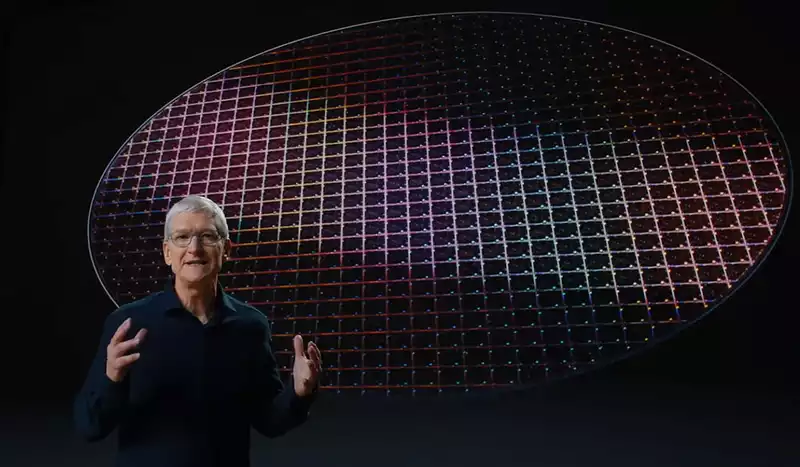It is no longer a question of if Apple will switch its Mac lineup from Intel hardware to ARM-based processors, but when. Apple made the announcement at this year's Worldwide Developers Conference (WWDC), calling it "a truly historic day for the Mac," and said it will embark on a two-year transition to its own custom silicon.
Make no mistake, the transition is already well underway: nearly 15 years after switching from IBM's PowerPC hardware to Intel's x86 processors, Apple will ship its first Mac with "Apple silicon" built in by the end of the year. This will mark the beginning of the transition period.
"With its powerful features and industry-leading performance, Apple silicon will make the Mac more powerful and capable than ever, and I have never been more excited about the future of the Mac," Apple CEO Tim Cook said in a statement.
One of the reasons Apple is moving away from Intel hardware is that it is trying to establish a common architecture across its various product lines. iPad, iPhone, and Apple Watch are all running custom designs based on ARM hardware, Macs will soon do so as well. But commonality is not the only reason. [According to Apple, the iPhone's CPU performance has improved more than 100-fold over the past decade. Similarly, according to Apple, the latest iPad Pro has 1,000 times better GPU performance than the original iPad.
"The iPad Pro is faster than most PC laptops, which foreshadows how well our architecture will scale to the Mac," Johny Srouji, senior vice president of hardware technology, said during WWDC.
This will be true for all laptops, but laptops in the same price range as the iPad Pro will fare much better.
In short, Apple is betting that it can improve performance more quickly and make better silicon than Intel. Incidentally, prior to the announcement, people who appeared to be familiar with Apple's plans told Bloomberg that the decision was made after seeing Intel's chip performance improve more slowly over the years. They also claimed that Apple's internal testing showed "significant improvements" in ARM hardware versus Intel silicon, "especially in graphics" and AI-powered apps.
Apple's actual announcement was a bit more diplomatic regarding its longtime chip partner. Cook even stated that there are several new Intel-based Macs in the pipeline that Apple is "really excited about." Apple also promised that a new version of macOS will support Intel-based Macs "for the next few years." However, it remains to be seen if much of the same software will survive the transition.
Still, it is clear that Apple is finally moving away from Intel, and the timing is probably no coincidence. The last few years have been a bit of a difficult time for Intel. Dealing with chip shortages and a longer than expected transition from 14-nanometer to 10-nanometer manufacturing has allowed AMD to gain market share across the board (laptops, desktops, servers).
Apple has also felt the blow from Intel's struggles. As Forbes reported last year, Cook indirectly blamed Intel's revenue decline
"The Mac business as a whole faced some processor constraints in the fiscal year ended March 31, with sales down 5% from last year," Cook said at the time. He added, "However, we believe that without those constraints, Mac sales would have increased over last year, and we do not believe that these challenges will have a significant impact on our third quarter results.
Cook was apparently referring to Intel's 9th generation Core processors, known as Coffee Lake Refresh. Whether or not Intel was aware of it at the time, in hindsight, it seems like a bridge was burned with this blunder. At this year's WWDC, Apple poured oil on the fire.
Intel will survive losing Apple as a customer and may even leap ahead of AMD in process technology in the next couple of years. However, this is not ideal. Apple is basically saying that it can make a more powerful Mac based on its own custom ARM hardware than it can using Intel processors.
ARM, developed by Softbank subsidiary ARM Holdings, is a set of architectures that can be licensed to other companies that want to develop their own chips while maintaining commonality across devices. Apple has a long history with the company, dating back to the 1980s.
It will be interesting to see how this is embraced by developers; Microsoft is making a version of Office that runs natively on ARM-based Macs, and Adobe is doing the same with its Creative Cloud apps, including Lightroom.
To spur this effort, Apple has released a Developer Transition Kit that packs an A12Z Bionic SoC (the same one used by the iPad Pro), 16GB of RAM, and a 512GB SSD in a Mac mini-like housing. Developers also have access to various software tools, documentation, forum support, and a beta version of the next macOS release called Big Sur.
The WWDC stream starts at the 1 hour 28 minute mark to hear more from Apple about the transition.
.

Comments